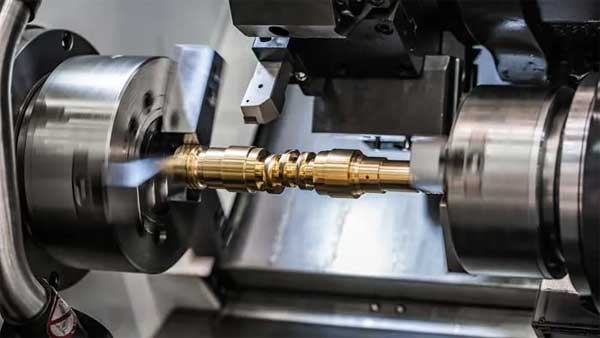Table of Contents:
CNC machining of shafts: Definitions, Processes, Materials, Surface Precision, and FAQ
- January 18, 2025
- Lucy
- Last updated on November 28, 2025, by Lucy
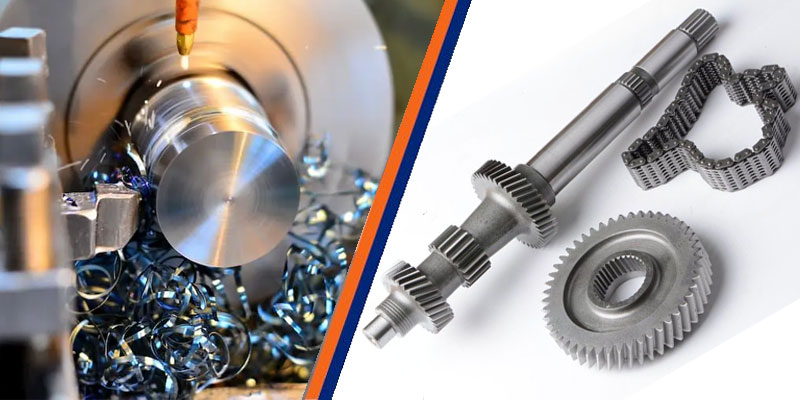
Shafts fail silently. Then your machine stops. That’s a costly nightmare. I’ve seen it too many times. As a CNC machinist for 25 years, I know shafts are the heartbeat of your machinery.
1. What are shafts?
Definition and Classification of Shafts
Shafts are the core components in mechanical transmission systems, mainly used for transmitting torque and rotary motion.
Depending on the application requirements, common types of axes include drive shaft, transmission shaft, support shaft and rotation shaft. The design and manufacture of shafts usually require customization or CNC machining according to specific requirements to ensure their efficient operation in complex mechanical systems.
The role of shafts in mechanical systems
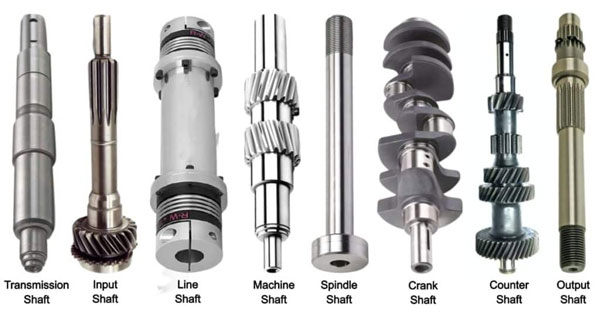
In automobiles, airplanes, robots, and other fields, axes connect components and transmit power, and are key components to ensure the normal operation of equipment.
CNC-machined shafts can meet stringent requirements for material selection, dimensional accuracy and load bearing capacity, ensuring efficient and safe operation of equipment.
2.Why Shaft Design Determines Machine Reliability?
Shafts aren’t just metal rods. They’re precision engineering. A poorly designed shaft causes vibration. It wears out bearings fast. It creates downtime. I once fixed a client’s machine that lost 12 hours of production weekly. The problem? A shaft with wrong taper angles. The fix? Redesigning the shaft profile.
Shafts need to handle torque. They must maintain alignment under load. Their geometry affects everything from vibration to noise levels. Even a 0.02mm error in shaft runout causes premature failure. I always tell clients: “Your shaft design isn’t optional. It’s the foundation.”
Advantages of CNC machining of customized axes
- High Precision: Ensure precise dimensional accuracy of shaft components.
- Flexibility: Adapt to complex design requirements.
- Efficiency: Reduce material waste and shorten production cycle.
- Consistency: Ensure stable product quality.
- Adaptability: Supports small-lot and large-lot production.
With CNC machining, you gain the precision, efficiency, and adaptability needed for high-quality customized axes. At Allied Metal, we combine advanced machining capabilities with proven expertise to deliver shaft components tailored to your exact requirements.
3. Material Selection and Its Impact on CNC Shaft Machining
Choosing the wrong material ruins your project. It wastes time and money. I’ve seen stainless steel shafts chew through carbide tools in minutes. That’s why material matters.
Material choice affects cutting speed, tool life, and surface finish . Hardened steel needs slower feeds. Aluminum requires different coolant strategies. The right material prevents scrap rates from hitting 30%.
Common Shaft Materials

Material selection for custom axes greatly impacts their performance and machining difficulty. Common options include carbon steel, stainless steel, aluminum alloy, and titanium alloy. Titanium alloys are favored in aerospace for their strength and light weight, though they are harder to machine. Aluminum alloys, known for easy machinability, are often used in automotive shafts.
Material Comparison for Shaft Machining
| Material Type | Hardness (HRC) | Recommended Tool | Cutting Speed (m/min) | Key Consideration |
|---|---|---|---|---|
| Mild Steel (AISI 1020) | 15-20 | Carbide | 120-180 | Cheap, easy to machine |
| Alloy Steel (4140) | 25-30 | Carbide | 80-120 | Needs pre-heat for hardening |
| Stainless Steel (304) | 30-35 | PCD | 60-90 | Requires high coolant pressure |
| Titanium (Ti-6Al-4V) | 35-40 | CBN | 40-60 | Generates high heat |
I always advise clients to share material specs early. A 30-second chat saves 3 days of rework. When a German client sent us 100mm stainless steel shafts without hardness data, we caught it before cutting. That saved them €12,000.
4. How to ensure the machining accuracy of the shafts?
CNC Programming and Tool Path Optimization
CNC programming is key to ensuring the accuracy of custom axes. By optimizing tool paths and cutting parameters, machining efficiency increases, and errors are minimized. Accurate programming ensures high-precision machining and strict adherence to the required dimensions, even for complex custom axes.
Common High-Precision Machining Technologies and Equipment
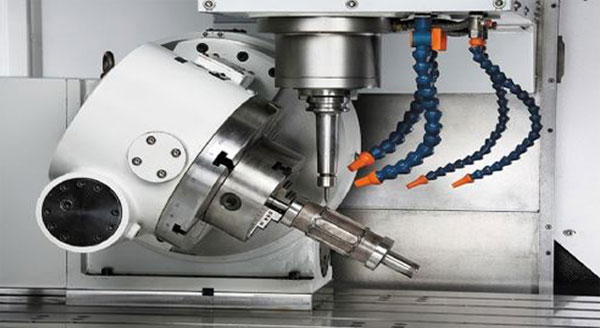
CNC lathes, milling machines, and 5-axis machining centers are essential for high-precision machining. Five-axis machining provides flexibility and precision, ensuring accuracy in all directions to meet design requirements. This technology is ideal for industries such as aerospace and automotive, where complex shapes and details are required.
5. Surface treatment and post-processing of shafts
Common Surface Finishing Techniques
Surface treatments are essential for improving the durability and performance of custom shafts, particularly for enhancing wear resistance, corrosion resistance, and hardness. Common methods include heat treatment, plating, nitriding, and painting. For automotive and aircraft shafts, heat treatment is often used to increase hardness and strength. High-precision axes, like those used in aerospace, may require specialized coatings to improve fatigue and corrosion resistance.
Post-Processing Needs and Methods
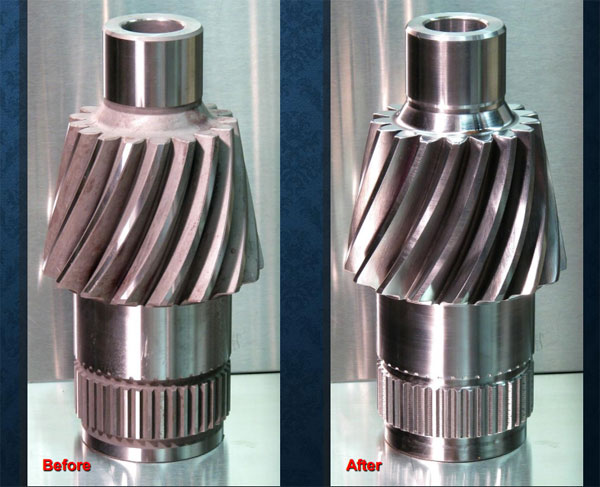
While CNC machining provides high-precision axes, additional post-processing, such as deburring, grinding, and polishing, is sometimes necessary. These steps improve surface quality, especially for customized axes where precision is critical, ensuring that the final product meets high-quality standards.
6. Shafts CNC machining application fields
Shafts applications in various industries
CNC-machined shafts are vital in industries requiring high precision and performance. In automotive, customized axes ensure stability in the drive train and suspension systems under high load. In aerospace, axes must meet strict lightweight, high-temperature, and fatigue resistance standards. The robotics industry demands high-precision, high-speed axes for accurate and stable movement.
Role of high-precision shafts in equipment
Customized and CNC machined axes are widely used in equipment such as engines, gearboxes, and landing gears. These axes play crucial roles in power transmission, and their precision and quality directly impact equipment performance and lifespan. CNC machining ensures the high precision, stability, and durability required for these applications.
7.Shaft Machining Case Study
Case Study: CNC Machining of a Custom Drive Shaft
Not long ago, we worked with a European automotive supplier who needed a custom drive shaft for their prototype EV project. The challenge was clear: it had to be extremely precise, strong enough to handle high rotational speeds, and smooth enough for direct assembly—no extra polishing allowed.
Here’s how we tackled it:
We chose 42CrMo4 alloy steel, set up the job on our 5-axis CNC machine, and carefully optimized the tool paths. With stable fixturing and a fine finishing pass, we not only hit the tight tolerance requirements but also cut machining time by about 18% compared to standard processes.
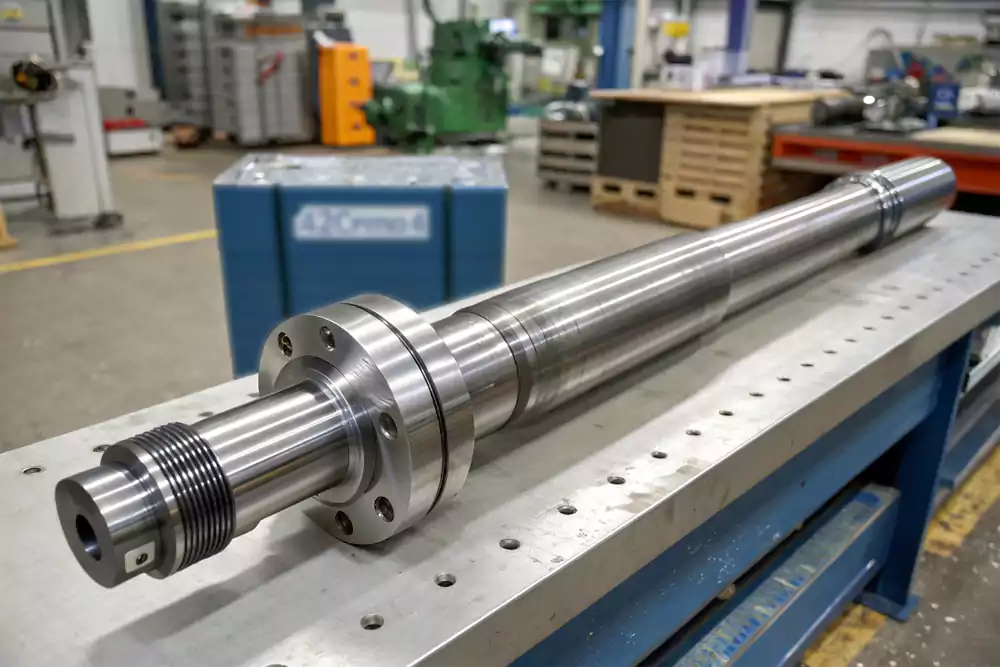
Key Parameters We Delivered
- Material: 42CrMo4 (alloy steel, heat-treated for strength)
- Diameter: Ø 32 mm, tolerance ±0.01 mm
- Length: 480 mm, straightness ≤ 0.02 mm
- Surface Finish: Ra 0.8 μm (ready for direct assembly)
- Concentricity: ≤ 0.015 mm
- Batch: 50 pcs for prototype testing
I believe you’ve seen that the customer is highly satisfied. These CNC-machined shaft components were directly integrated into the prototype assembly, helping the customer accelerate their product development process.
8. Common problems and solutions of CNC machining of axis
1. Why is the machining accuracy of the shaft not up to standard?
Usually due to inaccurate programming or toolpaths, or tool wear. Optimizing programming and toolpaths, changing tools regularly and ensuring stable workholding can improve accuracy.
2. What about poor surface quality of the axes?
Adjust cutting parameters to reduce friction and avoid surface roughness. Polishing or grinding can also be performed to enhance the surface finish.
3. What about cutting difficulties when machining high-strength materials?
Select wear-resistant tools, adjust cutting parameters, reduce feed rate, and also use coolant to minimize temperature and tool wear.
4. What about vibration or noise during machining?
Check the stability of the machine tool and the fixation of the workpiece, optimize the tool path and ensure that the workpiece is firmly clamped to reduce vibration and noise.
5. What if the machining cycle time is too long?
Shorten the cycle time by optimizing the CNC program, selecting high-efficiency tools, and arranging the machining sequence reasonably, and at the same time use advanced equipment to improve efficiency.
If you don’t find the answer to your specific question here, please visit our CNC Machining FAQ page for more detailed solutions and additional insights.
9. Summary
As technology progresses, the CNC machining process for shaft products will become increasingly vital in industrial development. The introduction of new materials and technologies brings both challenges and opportunities. With ongoing innovation, CNC machining will continue to drive industrial growth, improve productivity and precision, and meet the rising demand for high-quality shaft components.
